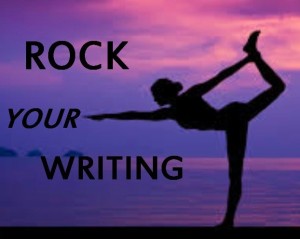 The body is a temple. We’ve all heard the expression. And everybody knows a temple is place for worship, a place to access the Divine. Even Apostle Paul said, “Do you not know that your body is a temple of the Holy Spirit, who is in you, whom you have received from God?” (1 Cor. 6:19-20).
The body is a temple. We’ve all heard the expression. And everybody knows a temple is place for worship, a place to access the Divine. Even Apostle Paul said, “Do you not know that your body is a temple of the Holy Spirit, who is in you, whom you have received from God?” (1 Cor. 6:19-20).
It should come as no surprise that our body parts hold ancient symbolic meanings. So before fixating on a character’s body part you might want to explore the symbolism associated with it— in case you want to give your story some symbolic ZING!
Heads up! It’s time for blog-quick look at body symbolism.
Head
-
most important part because reason, wisdom, intellect, and spirituality reside within
-
equated with authority and power ( heads of state, heads of corporations)
-
bowed is a sign of respect
-
tilts, nods, or shakes are powerful communicators
-
many-headed gods depicted different aspects or personalities —Shiva, Hecate, Brahma, and Janus have multiple heads
Hair
-
divine power and virility
-
inner and physical toughness—when Delilah snipped Samson’s tresses she reduced his physical strength
-
cutting the hair was a sign of sacrifice or surrender. In modern times—if done by women–the act symbolizes rebellion or liberation from feminine gender roles/expectations
-
Mary Magdalene’s long flowing hair was a sign of immoral sexual behavior
Ears
-
equated with a seashell or a spiral
-
associated with birth—Karma was born from his mother’s ear.
-
long ears are linked to wisdom in Buddhism
-
the Satyr’s large pointed ears reflect his sexual and sensual nature
Eyes
-
all seeing. Eye of Providence. Right Eye of Horus. Left of Eye of Horus
-
perception and spiritual enlightenment
-
giving someone the Evil Eye brings misfortune to the recipient
-
windows to the soul
-
for an entire blog on eyes click here
Nose
-
knowing
-
intrusiveness or meddlesome behavior/personality
-
valued by early man as a way of finding food
-
a phallic symbol
-
a nose that grows in length indicate lies—courtesy of Pinocchio
-
a turned up nose displays contempt
Mouth
-
deemed the creative force, but it’s our mouths which can get us in trouble
-
the Mouth of Hell devours the wicked
-
articulates our heart’s desires
-
just slap a big X-rated sign on the lips
Tongue
-
symbolic of speech
-
visible manifestation of the spoken word
-
teeth are symbolic of animistic strength and aggression
-
long teeth are a sign of ambition
-
Agrippina, Nero’s ambitious mother, had double canines
-
the tongue is either a destroyer or a creator
-
sticking one’s tongue out harkens back to times when that gesture warded off evil spirits
Shoulders
-
strength— think Atlas holding up the world
-
power
-
carrying responsibilities
Skeleton
-
harbinger of death
-
Bones symbolize strength, stability, determination
-
Chakras, the body’s energy forces, are aligned with the spine
Organs
-
intestines are symbolic of long life and eternity
-
intestines were used for divination in early times
-
the spleen is where melancholy and laughter come from ( part of the ol’ 4 Humors of the Body theory)
-
the liver symbolized passion during ancient Rome times
Limbs
-
balance and movement
-
good luck
-
arms are symbolic of strength, power, protection, and justice
Hands
-
command
-
protect
-
bless/bestow
-
pledge
-
symbolize power and strength
-
teach
- heal
-
there’s the omnipotent Hand of God
-
Hamsa hand is a protective talisman used by Muslims and Jews to protect against the Evil Eye
-
As expressive communicators, we are familiar with the meanings of: palms out, finger pointing to heaven, handshakes, hand wringing, and hand washing (Pontius Pilate and Lady Macbeth)
-
hidden hands denote respect in Asian cultures, but mistrust in western
Gender-specific body parts ( this is a PG-rated blog ). Early man was obsessed with those particular parts—wait, we still are!
-
male: strength, power, and virility
-
female: regeneration, fertility, procreation, and the miracle of birth
Feet
-
mobility
-
rooted or in touch with self and nature
-
bare feet touching the ground is man’s link to the Divine Earth
-
the monk’s bare feet signify their vow of poverty
-
in Asian cultures, feet are considered unclean so its wrong to display soles to another
-
solid foundation
-
washing another’s feet is a symbol of hospitality and humility
-
the Buddha’s footprint found at Buddhist temples indicates the Buddha’s presence
As you can see, lots of body parts were left out! This is just the tip of the Body Iceberg! A quick Google search will reveal many more symbolic aspects.
Note: I teach literary analysis and remind my students to look closely at the symbolism in a novel. Why did the author include that fruit? Or name the character Neil? Why is the protagonist sitting under a pear tree? Why is her dress blue? Why did the character lose a limb? Before jumping to any symbolic conclusions however, we look at the symbol in context of setting, history, and culture.















